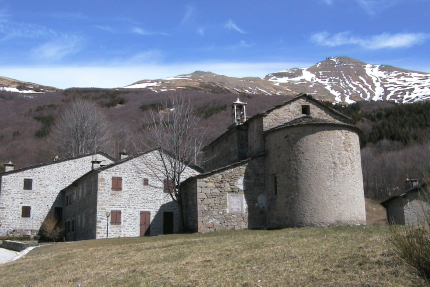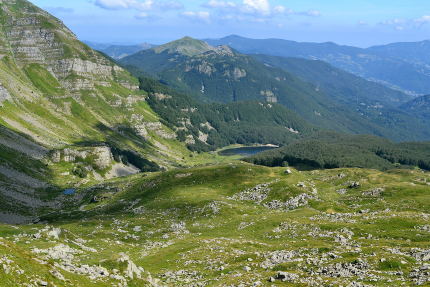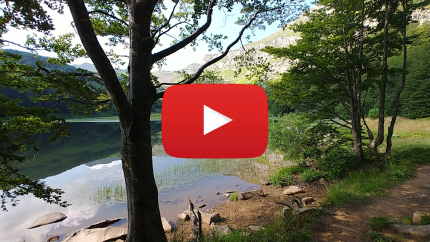Alto Appennino Modenese Regional Park
Country: Italy
Established in: 1988.
Surface area: 9,117 hectares; pre-park: 6,519 hectares.
Municipalities: Fanano, Fiumalbo, Frassinoro, Montecreto, Pievepelago, Riolunato, Sestola. Main features: coastal environment.
Main features: High-mountain forests and meadows, ridges and glacial lakes.
Discover the Park!
Park Description:
The park protects the whole Apennine crest of the area around Modena, with its imposing ridges and peaks of over 2.000 m, which culminate with Mount Cimone (2.165 m), the highest of the Northern Apennines. At the foot of the mountains, the last glaciation produced the interesting glacial cirques of Mounts Giovo and Rondinaio, with the lakes Santo and Baccio, and the valley between Rondinaio and Foce Giovo, with its picturesque small lakes Torbido and Turchino.
The bigger lakes Scaffaiolo and Pratignano, farther east, have a different origin. The peat bog of Lake Pratignano is one of the most valuable biotopes in the region. Also relevant are the peat bogs at Padule il Piano, on the eastern slope of Mount Cimone, and the ones of Maccherie, at the foot of Cima La Nuda. The many brooks and streams create an impressive web, dotted by beautiful waterfalls, like the ones formed by the Doccione, a stream running through the Valley of Fellicarolo.

"Borgata di Doccia" - Photo by Alto Appennino Modenese Park
At a higher altitude, mixed forests are replaced by beech woods and, closer to the top, by bilberry heath and grass-land which cover the ledges on the higher peaks. In the meadows and in the cracks between the rocks, rare botanical species are to be found, among which are the narcissuss anemone, Alpine aster, Geranium argenteum and Alpine anemone, along with pleasant spots of trumpet gentian and Viola calcarata. The purple flowers of the Alpine rose, a species for which this is the southernmost area of distribution, adorn the slopes of mount Libro Aperto.
Squirrels, badgers, foxes, roe-deer, the rare marten and many other animals live in the forests, while the area closer to the ridge is home not only to golden eagles and wolves, but also to birds like the whinchat, meadow pipit, black redstart, and amphibians like the Alpine newt and common frog and small mammals like the vole (Microtus nivalis). Marmots, which were introduced on Cimone after the Second World War, are now very common.

View to the Lake Baccio - Photo by Olga Sedioli
The park is probably better known under the unofficial name of Park of the Frignano, which underlines the strong sense of belonging to the culture of an area that was particularly autonomous during the long domination of the d'Este. The fortress of Sestola and the curious “Celtic huts” in Doccia and Fiumalbo are only a few examples of a historical heritage whose features include hump-backed bridges, old sheds in the forests for drying chestnuts, shrines, oratories, churches and beautiful stone-houses in the mountain villages. The main towns, situated slightly farther downhill from the park’s boundaries, have in the last few years become important recreation centre, also thanks to Sestola’s skiing facilities. The network of excursion trails is extensive. Furthermore, the park’s offices in Pievepelago are supported by the visitor centres of Due Ponti and Cà Silvestro.
CEETO Pilot Action objective:
The pilot aims to implement the tourism governance model inside the Alto Appennino Modenese Regional Park, focusing on Lago Santo and its surrounings. Lago Santo is the second widest natural lake and one of the most visited sites of naturalistic interest of the Northern Appenines. Its complex and valuable high mountain ecosystem (glacial lakes, water springs, ancient forests) is both a strong point of attractiveness and fragile heritage to be conserved through sustainable tourism practices.
Alto Appennino Modenese Regional Park - CEETO Pilot Area video-presentation:
This video portrays the main natural features and tourism challenges that the Alto Appennino Modenese Regional Park, Italy, is facing. With CEETO project, the Park will test and implement a system to tackle the existing challenges.

